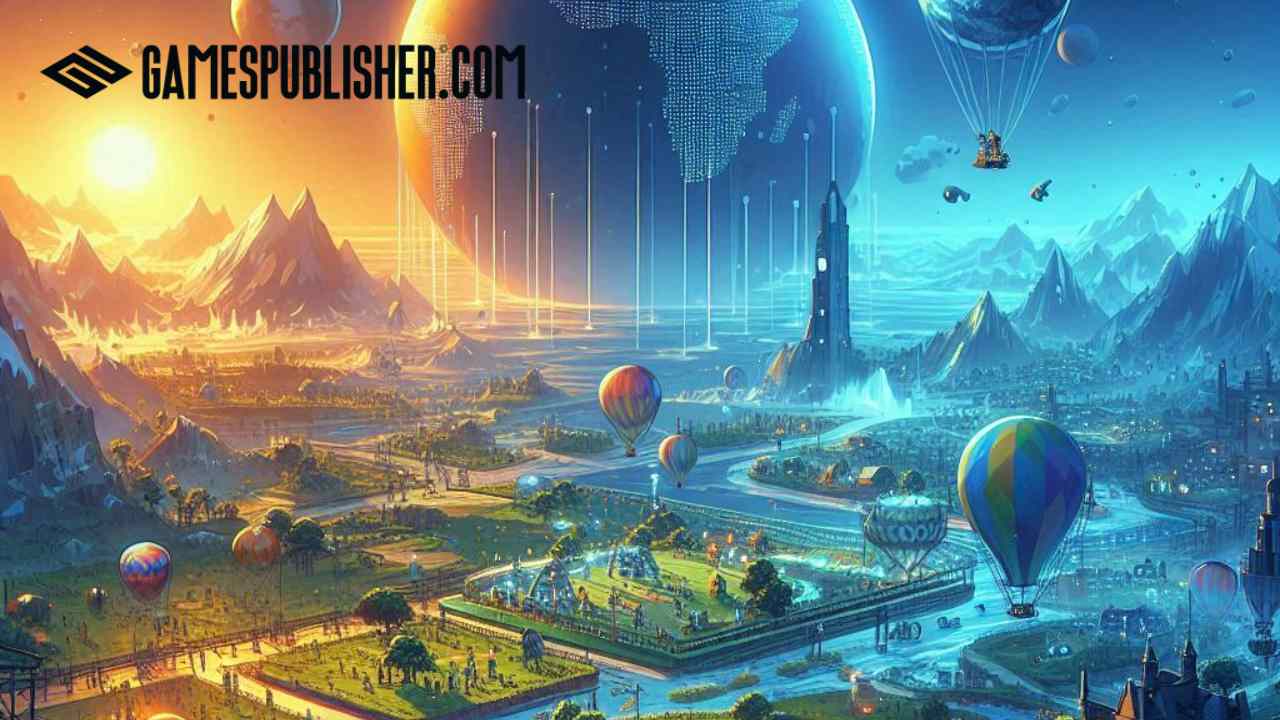The video game industry is vast and ever-changing, offering genres for every type of player. Sandbox and Open World games, in particular, have revolutionized gaming by providing players with freedom and exploration. Understanding their origins gives us valuable insights into how games have evolved.
Therefore, if you’re involved in creating games, understanding where these genres came from is essential.
By studying the pioneers of open-world and sandbox games, developers and publishers can understand the core mechanics that make them unique.
This knowledge helps developers create exciting games, meet player expectations, and drive innovation in world-building and storytelling.
Defining Sandbox and Open World Genres
The gaming industry never sits still, with game developers constantly pushing the boundaries of creativity and innovation.
In today’s evolving landscape, sandbox and open-world games thrive by offering freedom and deeply immersive experiences.
What Are Sandbox Games?
Sandbox games are all about player freedom and agency. Instead of following a rigid set of objectives, these games often let players loose in a virtual world to create their own stories and experiences.
For instance, think of early classics like SimCity, where you could build and manage your city from the ground up. Similarly, Minecraft gives you the tools to shape and explore a world of endless possibilities.
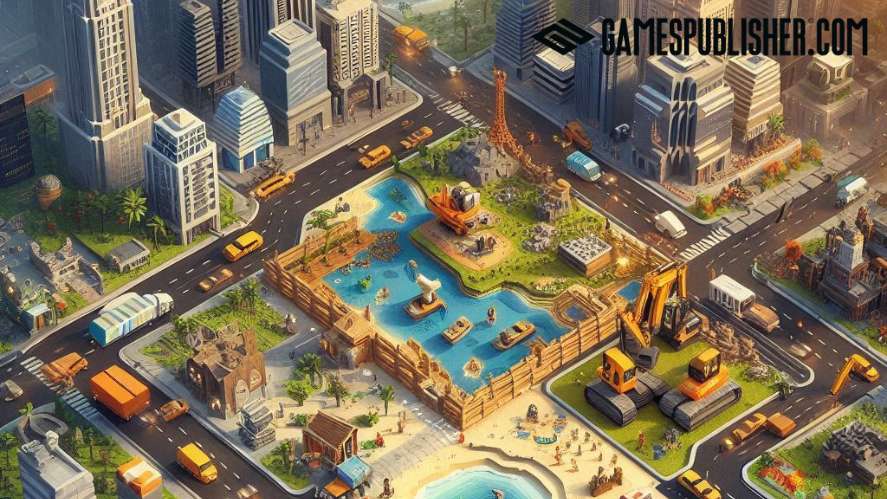
Basically, sandbox games empower players to experiment, express themselves, and genuinely make the game their own.
What Are Open World Games?
Open-world games give you, the player, a sense of freedom and exploration.
They drop us into massive, sprawling environments just begging to be explored. And it’s not just about wandering aimlessly – these games often blend structured quests and storylines with the freedom to discover hidden corners and go off the beaten path.
For instance, think of classics like The Legend of Zelda, where we could spend hours getting lost in Hyrule, uncovering secrets and battling monsters. Or Grand Theft Auto III, which let us loose in a living, breathing city with the freedom to do just about anything.
Finally, open-world games are a unique breed, offering a perfect mix of guided adventure and open-ended discovery, with something to offer every type of player.
Comparison and Overlap
While sandbox and open-world games are distinct genres, they often share common ground.
Many open-world games incorporate elements of sandbox design, providing players with freedom and choice within their expansive environments.
However, open-world games emphasize narrative and guided progression more than pure sandbox experiences.
This distinction is evident in games like The Witcher 3: Wild Hunt, which seamlessly blends a sprawling open world with a compelling storyline and character-driven quests.
As a result, it is a hybrid experience that offers both freedom and structure, appealing to a broader range of players.
Many modern games adopt this approach, blurring the lines between the two genres and offering a compelling mix of open-ended exploration and engaging narrative.
Origins of Sandbox Games
In the 80s and 90s, we saw the rise of this incredible genre, all about giving players the freedom to play their way, with no strings attached.
These games were all about open-ended gameplay, where you could explore, experiment, and create to your heart’s content.
For instance, one game that truly stands out from that era is SimCity (1989), the brainchild of legendary designer Will Wright. It gave players incredible control over their virtual cities, letting them build and manage everything.
SimCity wasn’t just about solving problems. It was a canvas for creativity and self-expression, paving the way for a new sandbox experience.
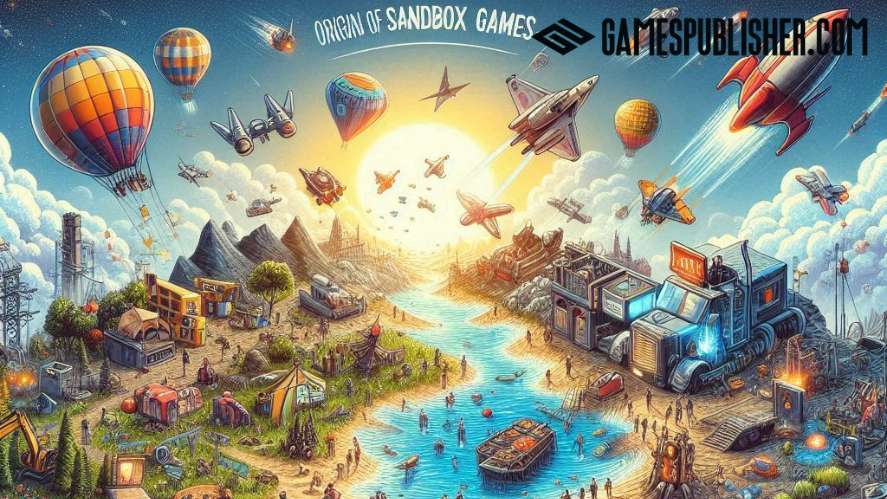
And who could forget The Sims?
Following SimCity’s footsteps, this game lets players create and control simulated people, building their homes, managing their lives, and even getting them into wacky situations.
The Sims took sandbox gaming to a whole new level, showing the world just how much fun it could be to play with virtual people.
Then, there was Second Life, a persistent online world where players could create avatars, build unique structures, and connect with others from all over the globe.
Second Life and games like it highlighted the incredible potential of virtual worlds for fostering creativity and building communities.
But the evolution of sandbox games didn’t stop there. The rise of modding – where players could modify and tinker with the game itself – opened up a new world of possibilities.
Garry’s Mod is a prime example.
It gives players the tools to mess with the game’s physics and assets, leading to hilarious and unexpected results. Modding empowers players to shape their gaming experiences, blurring the lines between creators and consumers.
It fostered a vibrant culture of community-driven content, pushing the boundaries of sandbox games and inspiring game developers to think outside the box.
Origins of Open World Games
Open-world games have captivated players for decades, offering expansive environments and a sense of freedom unmatched by other genres.
However, creating these immersive worlds was a gradual evolution driven by game developers’ creativity and innovation.
It all started in the early days of gaming, with titles like The Legend of Zelda (1986) laying the foundation for what was to come.
The Legend of Zelda, with its massive overworld and focus on exploration, was a true trailblazer. It showed the world just how captivating it could be to give players the freedom to roam and discover hidden secrets within a virtual world.
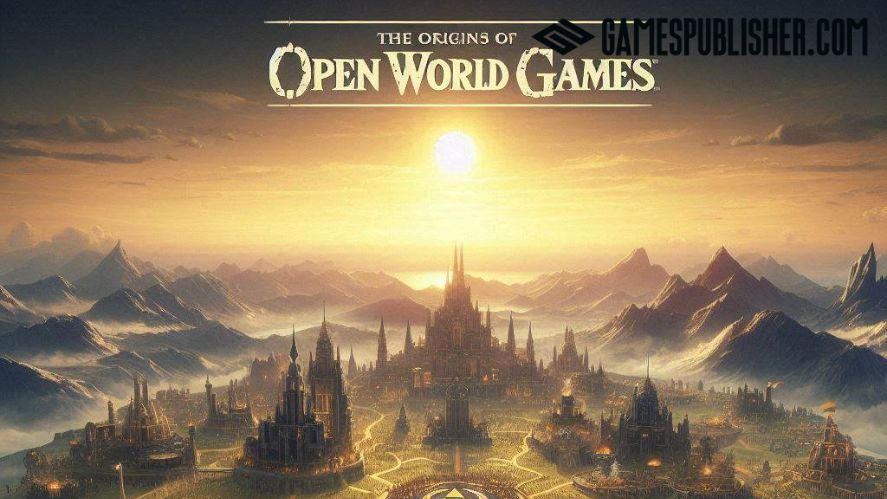
But the innovation didn’t stop there.
Games like Ultima and Elite pushed the boundaries even further. These games offered vast, interconnected worlds to explore and early examples of non-linear gameplay, giving players real choices in how they experienced the game.
Ultima was known for its sprawling maps and intricate storylines, while Elite gave players a sense of freedom and scale within a procedurally generated galaxy, a genuinely groundbreaking concept for its time.
Of course, the evolution of open-world games was only possible with technological advancements.
The arrival of 3D graphics and increased processing power in the late 90s and early 2000s allowed game developers to create more immersive and detailed worlds.
Grand Theft Auto III (2001) was a game-changer, offering players an unprecedented level of freedom and realism within a 3D open world.
In conclusion, the journey of open-world games is a testament to the constant drive for innovation and immersion in the gaming industry.
As technology continues to advance and game developers continue to push creative boundaries, we can only imagine the incredible open worlds that await us in the future.
Modern Innovations and Hybridization of Sandbox and Open World Genres
We’ll journey back to the 80s and 90s, when sandbox games first started making waves, offering players a whole new level of freedom and open-ended gameplay.
Genre Crossovers
These days, game developers love to blend elements of sandbox and open-world genres to create truly dynamic and captivating experiences.
It’s about balancing freedom and structure, allowing players to explore vast worlds, enjoy a compelling story, and make meaningful choices.
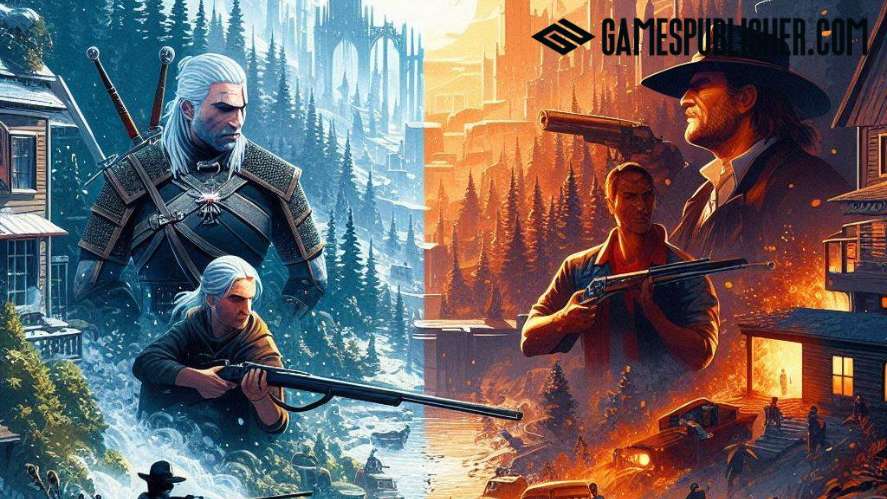
For example. take games like The Witcher 3: Wild Hunt and Red Dead Redemption 2.
These games masterfully blend exploration and storytelling, letting players forge their path, shape their journey, and experience epic narratives.
Ultimately, it’s a winning formula that caters to many players, from those who crave open-ended exploration to those who love a good story. The result is a genuinely captivating gaming experience that offers the best of both worlds.
Procedural Generation and Infinite Worlds
Procedural generation has been a total game-changer, especially in open-world games.
This incredible tech lets game developers create massive and diverse environments beyond what you could do with traditional-level design.
No Man’s Sky is a perfect example of what procedural generation can do. With its procedurally generated universe, the game gives you many planets to explore.
Each is unique, with its wild landscapes, weird creatures, and unexpected challenges. It’s like having an entire universe in the palm of your hand!
Essentially, this tech allows for creating worlds that are constantly changing and full of surprises, so every player’s experience is unique.
It’s a giant leap forward in game development, opening up a world of possibilities for boundless exploration and replayability.
By generating content on the fly, games can offer vast and ever-evolving worlds that keep players hooked for years.
It’s safe to say that the procedural generation has revolutionized open-world games and will continue to shape the future of interactive entertainment.
The Rise of Multiplayer Open Worlds
Multiplayer open-world games have exploded in popularity, and it’s easy to see why.
They’ve created a new level of excitement in the gaming industry, bringing players together in ways we’ve never seen before.
These games aren’t just about exploring vast digital worlds; they’re about forging connections and sharing experiences with others.
For example, think of games like Fortnite and GTA Online.
They’ve become cultural phenomena, offering players massive online playgrounds to team up with friends, compete against rivals, and hang out in a shared virtual space. It’s like having a gigantic block party that never ends!
Moreover, these games are constantly evolving, with new challenges, events, and player-created content popping up all the time. It’s this dynamic and unpredictable nature that keeps players coming back for more.
Let’s be honest; there’s nothing like the thrill of teaming up with friends to take down a rival gang or build an epic fort together.
Impact of Sandbox and Open World Genres on the Industry
Sandbox and open-world games have entertained millions while profoundly shaping the gaming industry.
These genres have reshaped game design and raised player expectations.
Influence on Game Development
The demand for immersive sandbox and open-world experiences has pushed game developers to create incredibly believable and engaging virtual worlds.
We’re not just talking about pretty scenery here; we’re talking about worlds that feel alive, with dynamic weather systems, intricate details in every corner, and NPCs that seem like real people.
And speaking of NPCs, advanced AI has become essential for bringing these virtual worlds to life. When characters react realistically to our choices, it deepens immersion and enhances the experience.
Furthermore, sandbox and open-world games also encourage a different kind of storytelling – environmental storytelling.
Rather than relying on dialogue and cutscenes, players uncover the story by exploring, observing, and finding hidden clues.
It’s like being a detective in a virtual world, and it makes for a much richer and more immersive experience.
Impact on Player Expectations
The freedom and non-linear gameplay in sandbox games, often seen in open-world titles, have shaped player expectations industry-wide.
Gamers expect agency in virtual worlds, making choices that shape the narrative and exploring at their own pace.
This has increased demand for freedom and exploration in games, even in traditionally linear genres.
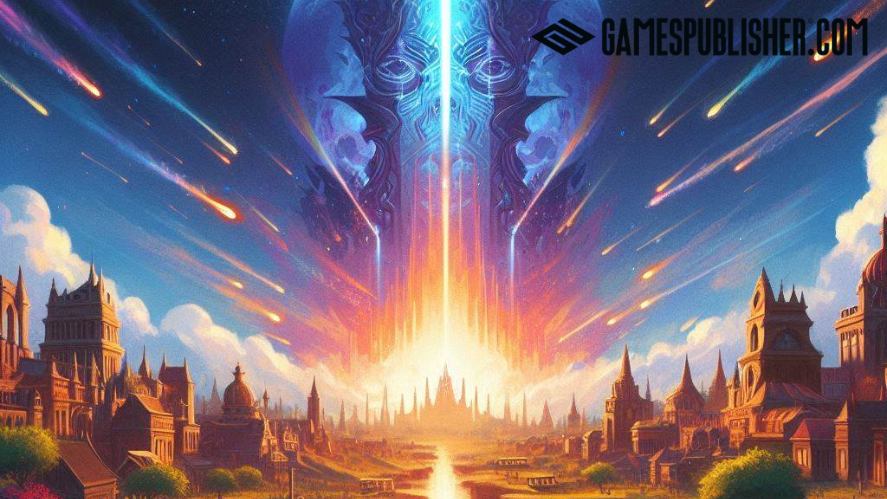
Players now desire meaningful choices and opportunities for discovery, regardless of the game’s genre or setting.
This shift challenges developers to create more dynamic, player-centric experiences that prioritize agency and exploration.
As a result, games are becoming increasingly interactive and responsive to player choices, leading to more engaging and personalized experiences.
Commercial Success and Market Trends
Games that emphasize freedom and exploration are hugely popular, consistently topping charts and shaping gaming trends.
This popularity has led to significant market growth, with publishers investing heavily in the development and marketing of these titles.
But what exactly makes these types of games so successful? Well, players are drawn to the sense of agency and freedom they provide.
Exploring a vast game world at your own pace, making choices, and forging your path is undeniably satisfying.
This sense of exploration and discovery has a timeless quality that keeps players returning for more.
These games have also been pioneers in innovative publishing models. For instance, think of early access releases, where players can experience games in development and provide feedback to the creators.
Or consider games-as-a-service models, where developers add new content and updates long after release to keep the experience fresh.
Conclusion
Sandbox and open world games have blown the doors regarding what’s possible in interactive entertainment.
And hold on tight because things are only going to get wilder! With technology advancing faster than ever, we can expect even more mind-blowing experiences in the future.
Sandbox and open world games lead the way in emerging trends like VR, AR, and the metaverse. Can you imagine stepping into those massive digital worlds?
These genres create immersive experiences that blur the line between real and virtual, drawing players in like never before.
By offering freedom and agency, they inspire the next generation of developers and push the industry forward.
The future of these games looks incredibly bright, promising even more captivating and expansive worlds for players to explore and shape.
Loading survey...

